The Best Portable Ultrasound Machine: A Detailed Guide
Updated: January 24, 2025

Portable ultrasound machines are redefining diagnostic imaging, offering convenience, accuracy, and mobility. Whether you’re in a clinic, hospital, or out in the field, these machines deliver high-quality imaging to meet diverse medical needs. But with so many options available, choosing the right device can be daunting.
This guide dives deep into the critical aspects of portable ultrasound machines, helping you identify the best fit for your specific requirements. From key features and top brands to specialty-specific models and budget-friendly options, this article covers it all.
Key Features to Consider
Selecting a portable ultrasound machine demands careful consideration of various features that impact performance, usability, and overall value:
1. Image Quality and Resolution
High-quality imaging is the backbone of any ultrasound device. Look for machines with high-frequency probes, advanced image processing capabilities, and technologies like 3D/4D imaging and harmonic imaging to ensure clarity and accuracy. Better resolution can mean the difference between a clear diagnosis and a missed detail.
2. Frequency and Depth Penetration
Frequency determines the depth of imaging:
- High-frequency probes offer detailed surface-level imaging, ideal for musculoskeletal or vascular scans.
- Low-frequency probes provide deeper penetration for abdominal or cardiac imaging.
Having the right frequency range ensures versatility across various applications.
3. Probe and Transducer Options
The type and number of probes dictate the range of applications a machine can handle. Essential probe types include:
- Linear Probes for vascular and soft tissue imaging.
- Curved Array Probes for abdominal and pelvic imaging.
- Phased Array Probes for cardiac imaging.
- Specialized Probes for areas like obstetrics and veterinary imaging.
4. Size and Portability
Portability is paramount for on-the-go practitioners. Handheld models are lightweight and easy to carry, while cart-based systems offer more stability and are suited for clinics with limited space.
5. Battery Life and Power Options
Extended battery life is essential for uninterrupted use during long sessions or in remote locations. Machines with quick-charging options and swappable batteries provide added convenience.
6. User Interface and Software
An intuitive interface reduces learning curves. Look for machines with:
- Touchscreen controls for ease of use.
- Pre-set imaging modes for quick setup.
- Customizable software that adapts to specific specialties.
7. Connectivity and Data Transfer Options
Modern machines often feature Wi-Fi, Bluetooth, and USB connectivity for seamless data transfer. Cloud integration for PACS (Picture Archiving and Communication Systems) enhances workflow efficiency.
8. Warranty and Support
A robust warranty and dependable after-sales support are critical. Ensure the manufacturer provides prompt service and easy access to spare parts to maintain long-term reliability.

Top Brands and Models
Portable ultrasound machines are synonymous with leading brands that have revolutionized diagnostic imaging. Here’s an in-depth look at the most reputable brands, their standout models, and a comparison of their features, benefits, and pricing.
Dr. Sono
- Overview: Dr. Sono specializes in compact and highly portable ultrasound devices designed for modern healthcare needs. It is a global leader in medical imaging. Dr. Sono ultrasound devices don’t require subscription or membership fees. This is a key advantage compared to other brands.
- Specialization: Primary care, remote diagnostics, educational training, cardiology, urology, critical care, vascular access etc.
- Reputation: Praised for its affordability, innovative features, and excellent customer support.
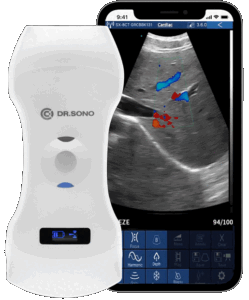
GE Healthcare
- Overview: GE offers cutting-edge technology and a diverse range of ultrasound devices suitable for various specialties.
- Specialization: Cardiovascular, obstetrics, and general imaging.
- Reputation: Renowned for reliability, robust build quality, and superior imaging solutions.

Philips
- Overview: Known for integrating ergonomic designs with advanced imaging technologies, Philips stands out for its user-friendly devices.
- Specialization: High-resolution imaging, point-of-care solutions, and compact systems.
- Reputation: Focuses on portability and intuitive interfaces without compromising on performance.
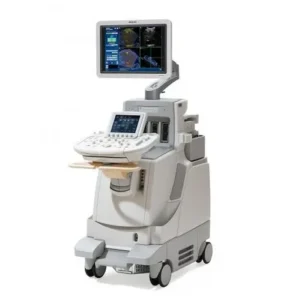
Siemens Healthineers
- Overview: Siemens combines innovative features like wireless capabilities with exceptional imaging clarity. Their systems are designed for flexibility and ease of use.
- Specialization: Point-of-care applications, emergency imaging, and cardiology.
- Reputation: Well-regarded for pioneering wireless technology and durability.
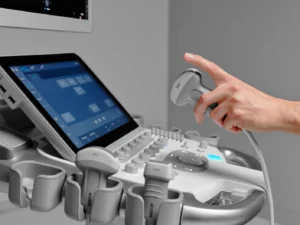
Mindray
- Overview: Offering cost-effective solutions without sacrificing essential features, Mindray is a favorite among budget-conscious buyers.
- Specialization: Versatile imaging systems for general diagnostics and obstetrics.
- Reputation: Excellent value for money with advanced features at competitive prices.
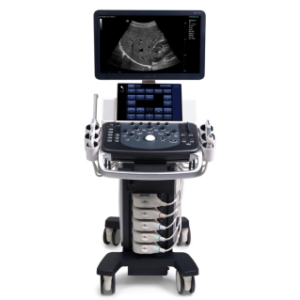
Sonosite
- Overview: A pioneer in portable and durable ultrasound machines, Sonosite caters specifically to emergency and point-of-care imaging.
- Specialization: Trauma, emergency care, and musculoskeletal imaging.
- Reputation: Built for rugged environments with quick startup times and excellent portability.

Review of Top Models
Here’s a closer look at some of the best portable ultrasound models from these top brands:
Dr. Sono Tri-Scan Max Portable Ultrasound Scanner
- Key Features:
- Supports versatile applications across multiple specialties.
- Offers advanced imaging modes: B-mode, M-mode, Color Doppler, Power Doppler, and Pulsed Wave Doppler.
- Equipped with dual-probe technology, featuring convex, linear, and phased array probes.
- Best For: Comprehensive imaging across a wide range of medical specialties and field applications.
- Pricing: Competitive pricing with added value for its extensive features and lifetime benefits.
· GE Vivid q
- Key Features:
- Advanced Doppler imaging for cardiovascular applications.
- Compact design with a powerful imaging engine.
- Exceptional clarity for both 2D and Doppler modes.
- Best For: Cardiac and vascular imaging.
- Pricing: Premium-priced due to advanced features.
Philips CX50
- Key Features:
- Lightweight and portable, designed for mobility.
- Advanced technologies like PureWave transducers for superior image resolution.
- Versatile for applications ranging from abdominal to musculoskeletal imaging.
- Best For: General imaging and mobile applications.
- Pricing: Mid to high range depending on configurations.
Siemens ACUSON Freestyle
- Key Features:
- Wireless transducer technology for unparalleled portability.
- Intuitive touchscreen interface.
- High-performance imaging for emergency and point-of-care scenarios.
- Best For: Emergency care and fieldwork.
- Pricing: On the higher side due to wireless innovations.
Mindray DC-60
- Key Features:
- 4D imaging capabilities for obstetric and gynecological applications.
- Pre-set workflows to simplify scanning.
- Compact design with an excellent price-to-performance ratio.
- Best For: Obstetrics, gynecology, and general imaging.
- Pricing: Affordable, ideal for budget-conscious professionals.
Sonosite Edge II
- Key Features:
- Rugged, durable design built for demanding environments.
- Quick boot-up times for immediate use in emergencies.
- Crystal-clear imaging for trauma and musculoskeletal diagnostics.
- Best For: Trauma and emergency care.
- Pricing: Moderate to high, depending on features and configurations.
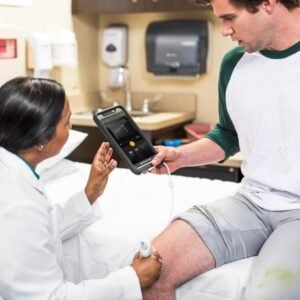
Comparison of Features, Benefits, and Pricing
| Brand/Model | Key Features | Benefits | Pricing |
| Tri Scan Max | Multiple applications, dual probe technology | Advanced imaging modes | Competitive priced |
| GE Vivid q | Compact, advanced Doppler imaging. | Exceptional clarity for cardiac scans. | Premium-priced. |
| Philips CX50 | Lightweight, PureWave technology. | Versatile and mobile applications. | Mid to high. |
| Siemens ACUSON Freestyle | Wireless probes, intuitive interface. | Perfect for emergency and field use. | High-end. |
| Mindray DC-60 | 4D imaging, pre-set workflows. | Affordable with advanced features. | Budget-friendly. |
| Sonosite Edge II | Durable, quick start-up. | Ideal for trauma care. | Moderate to high. |
When choosing among these models, consider your specific application, required features, and budget. GE and Philips cater to those needing high-end features, while Mindray offers affordability and excellent functionality. Siemens and Sonosite stand out for their innovative designs and portability, especially in point-of-care settings.
Leaving all the products behind, Dr. Sono’s Tri Scan Max portable ultrasound machine is the global leading wireless device that never disappoints its users.
Specialty-Specific Portable Ultrasound Machines
Portable ultrasound machines are designed to cater to the specific needs of various medical specialties.
1. Musculoskeletal Imaging
- Features Needed: High-frequency linear probes and tissue-specific imaging modes.
- Recommended Models: Dr. Sono Linear Pro, Tri Scan Max, Sonosite Edge II, GE Venue Go.
2. Cardiovascular Imaging
- Features Needed: Phased array probes and advanced Doppler modes for detailed cardiac analysis.
- Recommended Models: Dr. Sono Tri Scan Max, GE Vivid q, Philips CX50.
3. Abdominal Imaging
- Features Needed: Curved array probes and harmonic imaging for deep tissue visuals.
- Recommended Models: Tri Scan Max, Siemens ACUSON Freestyle, Mindray Z60.
4. Obstetric Imaging
- Features Needed: High-frequency probes and advanced fetal imaging technologies.
- Recommended Models: Dr. Sono Convex Pro, Mindray DC-60, Philips ClearVue 650.
5. Veterinary Imaging
- Features Needed: Specialized probes and software tailored for animal diagnostics.
- Recommended Models: Mindray Vetus E7, SonoScape A6V.

Budget-Friendly Options
For those on a tight budget, there are affordable options that balance performance and cost-effectiveness.
Recommended Budget Models
- Tri Scan Max: Multiple imaging modes.
- Edan U50: Affordable with good image quality.
- Mindray DP-50: Combines quality imaging with affordability.
Comparison with High-End Models
While budget-friendly machines may lack advanced features like wireless probes or 4D imaging, they are excellent for general diagnostics in smaller clinics or remote locations.
Important Considerations
Before making your final decision, consider the following factors:
- Regulatory Compliance: Ensure the machine complies with FDA, CE, or similar certifications for safety.
- Training and Education: Many brands offer training programs to help you get started.
- Maintenance and Repair: Opt for machines with accessible servicing and easy-to-source spare parts.
- Warranty and Support: A longer warranty period (2-5 years) provides peace of mind.
- Return and Refund Policies: Understand the vendor’s policies in case the machine doesn’t meet your expectations.

Conclusion
Portable ultrasound machines bring unparalleled convenience and versatility to medical imaging. By carefully considering features, specialty needs, and budget, you can find the right device to enhance your practice.
Take the time to compare models, evaluate features, and prioritize your specific clinical needs to make a well-informed choice. For further assistance, consult product experts or trusted reviews to ensure the best investment.

Article by
Scott Caswell
Scott is a co-founder of PUM and an ultrasound technology expert with a passion for innovation in the medical field. Scott has dedicated his career to advancing portable ultrasound devices, making medical imaging more accessible to professionals around the globe.
When not refining ultrasound devices, he enjoys hiking, experimenting with new recipes, and exploring the latest tech gadgets. Scott is dedicated to making healthcare more accessible and efficient through cutting-edge ultrasound solutions.
Join Our Mailing List & Save!
Enter your email address below to receive exclusive promotions and discounts along with additional product information and tips
Shop Now
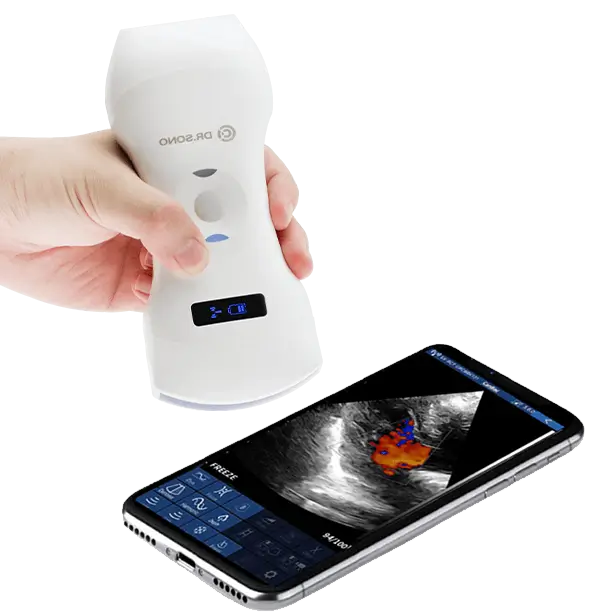

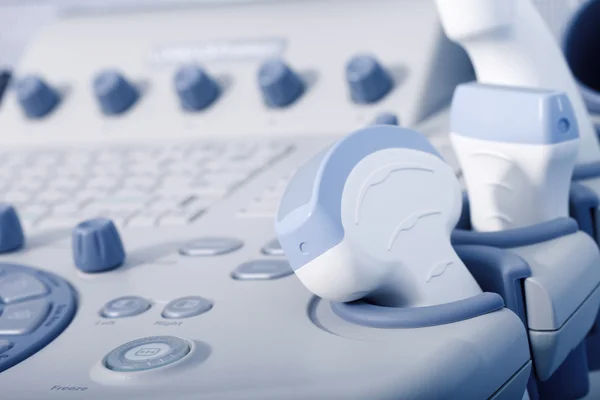



Leave a Reply